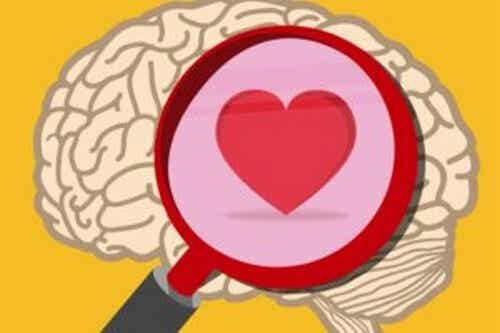The intensity of an emotion can be strong or weak. But when it is unstable or uncertain, so-called maladaptive emotions are triggered in the human being

Last update: 24 March, 2022
The adaptive and evolutionary value of emotions is a fact and science has been tasked with proving it. Studies by Barbara L. Fredrickson, a professor in the Department of Psychology at the University of North Carolina, pointed out that fundamental emotions have an inherent adaptive function. These findings lead to the logic that there are no maladaptive emotions, but they can be more or less intense and frequent depending on the case.
All emotions have a function that makes them useful, regardless of how pleasant (or not) they can generate. Given that the most unpleasant emotions have important functions in social adjustment and personal adjustment, can we still talk about maladaptive emotions?
Our emotions are the product of an evolution sensitive to the characteristics of the external world. However, not everything is out of our control in this genetic equation called "emotions". We can interact and adapt them to the context. In other words, we are able to manage their energy and their message.
"There is a place for every emotion, but it doesn't have to interfere with the right action."
-Susan Oakey-Baker-
What are maladaptive emotions?
Jorge Bucay tells us that many feelings arise outside of our choice and that, therefore, we are not responsible for their appearance. But, on the contrary, we are responsible for our action in response to them. Each of us experiences all the possible emotions learned from our ancestors and acquired in a phylogenetic way from our brain.
It is important to explain that everyone, at some point in their life, will feel the most "embarrassing" emotions such as jealousy, anger, sadness. The sooner we stop thinking that those emotions need to be hidden or minimized, the more benefits we will derive from them.
It's worth thinking about the idea that being jealous is good and feeling joy is bad depending on the situation in which we experience these emotions. Ultimately, understanding that feeling emotions is not good or bad in itself. It is an evolutionary fact and only what we will do with them, if anything, is commendable (or reprehensible).
Evolution and science tell us that there are no maladaptive emotions, but maladaptive behaviors. A practical example is given to us by anger. Nobody is exempt from it. It is an emotion from our biological repertoire that has helped us evolve as a species. Anger helps us in those situations where it is necessary to increase neuronal activity, muscles and heart rate indices.
It is therefore a necessary emotion, but our response to it may be maladjusted. We can feel anger for a thousand reasons, but acting in one direction or another will be our choice. For this we must understand why we live these emotions and how it is possible to manage the possible responses of our repertoire. We are not "guilty" of feeling anger, but of what we do with the energy and the message it makes available to us.
Emotional education allows us to get away from most of the unnecessary suffering created by ourselves.
Emotions: adaptive value
As we have already seen, emotions are neither positive nor negative. They become so based on the context and the person who are part of their equation so general and, at the same time, specific. In the previous sections we talked about their adaptive value. Just as they can be of great help, in parallel they can also be a source of conflicts and disturbances if handled poorly.
Unpleasant emotions have an adaptive value, make us more cautious and alert, or give us the impetus necessary to defend ourselves from a possible threat. However, at the same time they are also the source of many bad emotional adaptations. That is why we speak, the wrong way, of maladaptive emotions.
For example, anxiety is an emotional state resulting from adaptive pressures during evolution, which has ensured the survival of individuals, equipping them with the ability to better deal with threatening and potentially harmful situations.
This emotional state gives rise to a wide range of results: from a simple state of alertness to a potentially threatening stimulus. Up to the vigorous responses that accompany fear and panic.
When these states are exaggerated - if they appear in the face of "normal" stimuli that other people do not trigger emotions - or occur continuously, they can trigger conditions such as generalized anxiety disorder, phobias, panic attacks and many other ailments included in the DSM-5 (Diagnostic and Statistical Manual of Mental Disorders).
"People react predictively, especially when they don't have time to think."
-Keith Ablow-

























